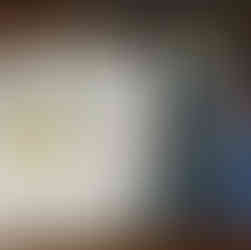Proofing "The Boy Who Saved the Moon"
- Dennis DeRobertis

- Nov 3, 2023
- 3 min read
Updated: Nov 5, 2023
A process of creating a printed proof before getting a printed proof

Be Your Own Printer, Inc.
I've mentioned this before in other posts, but one thing I always do before ordering a physical proof is to approximate - as best I can - what I actually think will show up at my doorstep. I never want to wait for the printer's proof to see how things look and feel. Things I can check beforehand are colors (for the most part), layout, text positioning, readability, etc. Plus, those intangibles like pacing and overall feel. Reading your story digitally is a whole lot different than reading it cover-to-cover right from the palm of your hands.
Note: Obviously, you're doing the majority of your work while looking at your monitor (and I recommend getting a certified color accurate one), but nothing replaces working with a physical copy.
Of course, you could make all your changes after getting your printer's proofs, but that could be a long and costly process, especially if you've set a publishing and advertising calendar. For me, mitigating any surprises and working through most of the issues before ordering a printed proof is the way to go. I do this is by creating a proof-of-a-proof. Usually, multiple proofs-of-a-proof.
To start the process, I clean my printer's printer nozzles and then print the interior pages using 28lb premium inkjet paper. Don't use standard 22lb copy paper. You'll get too much bleed through. The cover gets printed on good cardstock. Once printed, the cover is scored, and the cover and interior pages are then trimmed to size. Sometimes when printing, though, I forget to flip the page. This often gives me some very interesting results!
Cannibalizing Your Own Books
Once everything is printed, I cannibalize one of my existing books. Stone Hollow Press has published books in 3 different trim sizes, the most common one being the trim used for the Little Brown Spider series. This is also the trim size I used for "The Boy Who Saved the Moon." I debated at one point using a different trim, but, in the end, the LBS one worked best.
The nice thing about using a previous published book from the same printer with the same properties (i.e. hardcover, gloss cover, color pages, etc.) and size, is that you know exactly what you're dealing with. So, out comes my trusty utility knife. I cut out the interior pages, which only requires two slices. One at the beginning of the book and one at the back. The entire interior section pops out after that.
No reason to remove the cover. The new one will just be plastered over it. Yes, the existing cover adds some extra thickness, but if that really makes a difference to where your title or artwork falls, then you have other issues to address.
Cover-to-Cover
Once the book has been sliced and diced, I arrange the trimmed pages in order and staple the pages as close to the edge as possible. You want to mimic the tight binding of the gluing process your printer will use. Stapling too far away from the edge will cause page misalignment at the gutter. If you have a scene in your picture book that spans pages, you'll probably notice the misaligned artwork if this happens.
After that, it's a few cuts away from positioning and taping the front and back covers. (For those who are wondering, the red line mark you see on the book on the left is where the hardcover crease will be. I use it to judge how close the artwork is away from the spine.)
Take note that you'll never get an exact match with the colors unless you're using the same printers, ink, and paper as your printer. But you'll get close enough.

A Labor of Love
Doing your own printed proof takes time. There's the setting up of trim and bleed lines in your files, making sure your printer is ready and printing at its highest quality with similar paper as your book will have, and then all the time it takes to actually print, score, cut, tape and everything else in-between. But it's an excellent approximation of what you can expect from your printer.
That image you see at the beginning of this post? The one right there at the top? That's all the paper and cannibalized books that went into the various proofs-of-a-proof for the final version of, "The Boy Who Saved the Moon." And I wouldn't change a thing. It puts you in the driver's seat and lets you control the tiniest of details without having to order and wait for proofs from your printer.
So, do check out, "The Boy Who Saved the Moon" on November 16, 2023. We think you'll enjoy this unique and heartfelt story!
- DennisD.
Publisher/Moonboy
.png)















Comments